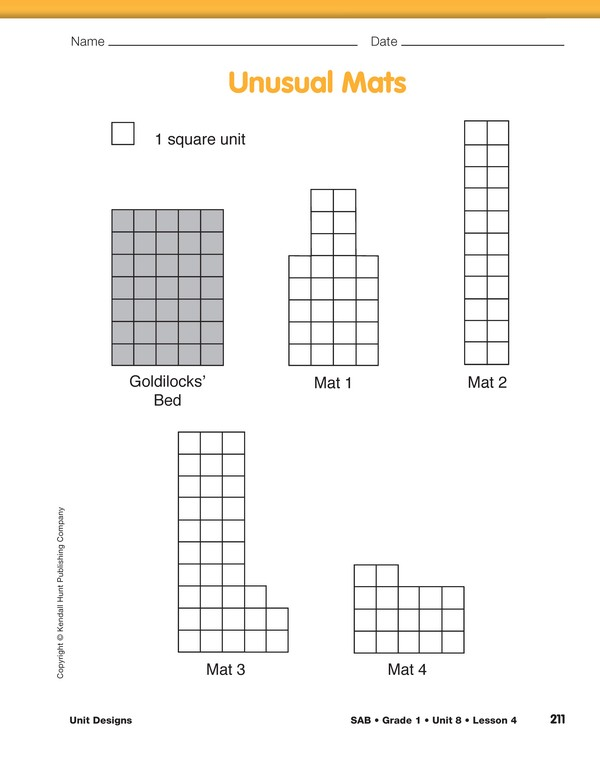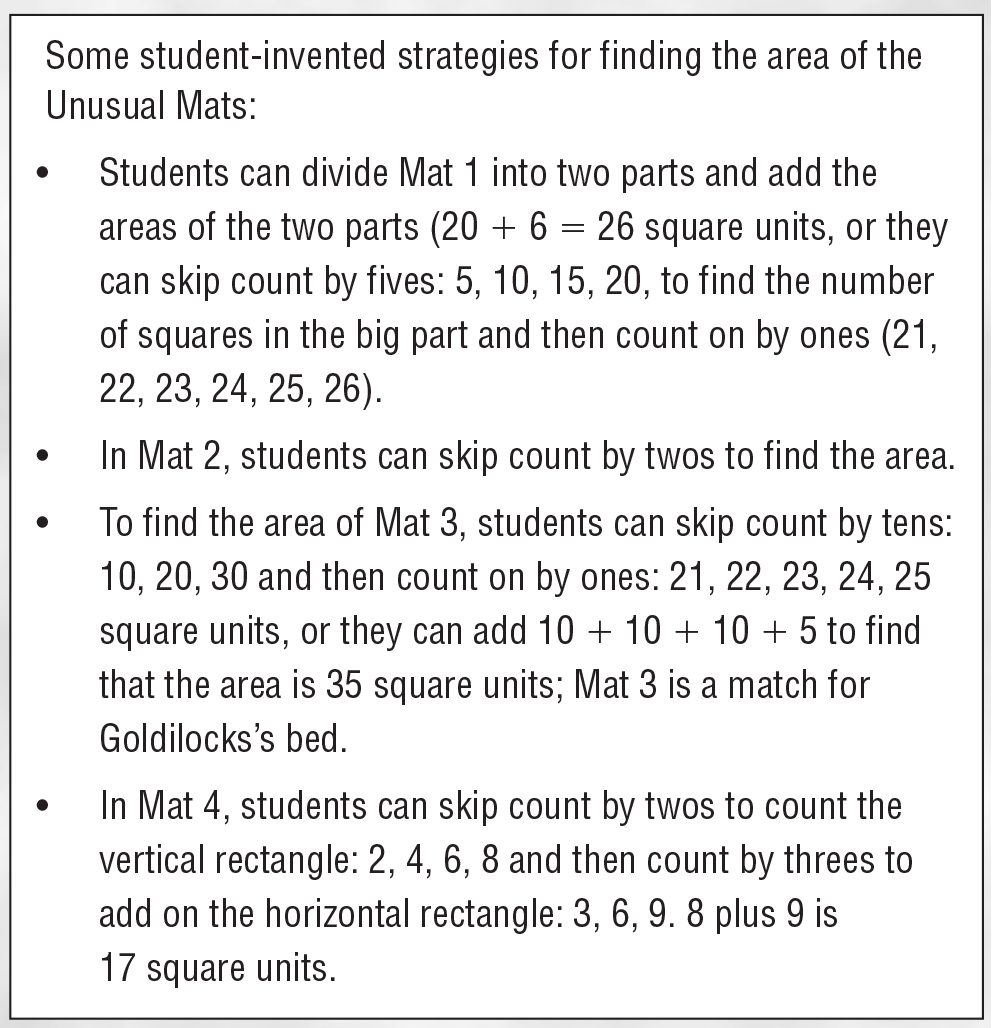Unit Designs
Est. Class Sessions: 1–2Developing the Lesson
Part 1: More Measuring for Goldilocks
Introduce the lesson by telling the following story:
Goldilocks was walking through the woods again, avoiding both bears and rectangles this time. However, she started to feel sleepy and began to think she needed to take a short nap. She tried to stay awake because she knew she had gotten into trouble when she took a nap at the house of the three bears. She saw a school that had a very unusual shape and decided that she would ask the Kindergarten teacher to let her take a nap on a mat. A very kind teacher answered the door and said, “Of course you may take a nap here. We were just getting ready for a nap ourselves.” She took Goldilocks to the classroom and told her she could pick from the mats of students who were absent. Goldilocks stopped and stared when she saw the four mats. They didn’t look like regular mats at all. They had very weird shapes. It looked like they were different sizes, but she couldn’t tell which was her size because of the strange shapes. Goldilocks knew that her bed at home has an area of 35 square units. She knew that she needed that much space to be comfortable. Help Goldilocks find a mat with the same area.
Introduce Goldilocks’s problem of finding a mat to sleep on by showing the class a display of the Unusual Mats page from the Student Activity Book. Direct students’ attention to Goldilocks’s bed. Encourage students to use skip counting skills and addition strategies to make the task of counting the square units simpler.
Ask:
Ask a student to demonstrate skip counting the rows of her bed by fives: 5, 10, 15, 20, 25, 30, 35 square units.
Before asking students to complete the
page, ask:
Have students complete the Unusual Mats page in the Student Activity Book independently. Elicit strategies for finding the area of each mat.
See Figure 1 and ask:
Give each student pair 35 square-inch tiles and ask them to make a different shape mat for Goldilocks. Have several students share the mat design they created and ask students to show how they know there are 35 square units in their mat.















